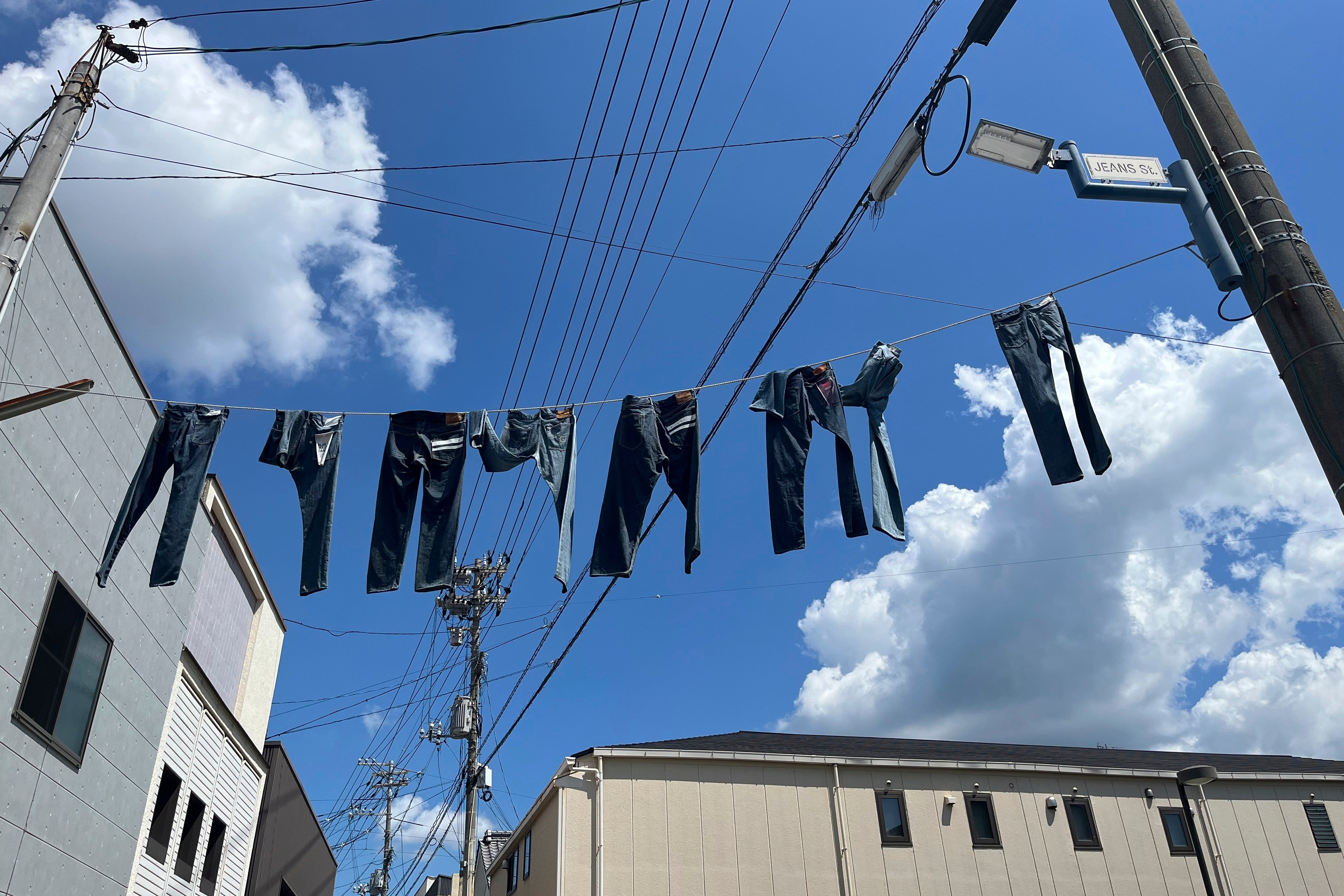Jeans flap like flags over the town of Kojima, Japan as denim draws in fashion-tourists from across the world.
Some would call this spot in southwestern seaside Okayama Prefecture a mecca of jeans, where fans from around the world make pilgrimage.
The main road is even named Jeans Street.
The soda vending machines at the train station are plastered with the image of jeans. The roads are painted blue, with the lines at the edges pink and white, the trademark of Kojima jeans’ seams.
With some 40 jeans manufacturers and stores, including denim-themed cafes, the area draws about 100,000 visitors a year, according to the Japan National Tourism Organization.
Japanese jeans tend to be high-end, dark and durable. Although a tiny part of the global jeans market, they have carved out a niche with a reputation for craftsmanship. Kojima gave birth to popular brands like Big John, with roots dating to the 1940s, and now supplies international fashion brands, including Gucci.
“The Japanese industry has established a way of looking at denim from a much more connoisseurship and collecting approach” than a mass marketing one, says Emma McClendon, assistant professor of fashion studies at St. John’s University in New York.

In Kojima, you might be in for a disappointment if you expect the glamour of a fashion center. Jeans Street is quaint and uncrowded. Each company in the region is relatively small, hiring about 100 people.
What you will find are people taking pride in “monozukuri,” or “making things,” connoting a devoted, laborious attention to detail. It’s an ethic entrenched throughout Japan, from big carmakers to the local tofu store.
“More like making a kimono” is the way Yoshiharu Okamoto, a dyeing craftsman at Kojima-based manufacturer Momotaro Jeans, puts it.
His hands and nails are tinged blue from dipping threads of Zimbabwean cotton into a big pail of dye.
He knows by smell and feel the right state of the indigo, which he compares to a living thing. He swears it’s a 365-days-a-year job, as the dye has to be checked and mixed every day.
“It’s not that easy to get this special color,” Okamoto told The Associated Press during a recent tour of the production facilities. “It’s my life.”
The…
Click Here to Read the Full Original Article at The Independent Travel…
